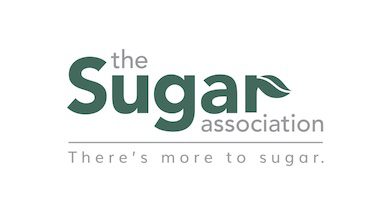

April 24, 2024 (Washington, DC) – While welcoming the alignment of school meals with the Dietary Guidelines for Americans (DGA) and supporting the aim to limit added sugars to 10% of each week’s menu, the Sugar Association today (Wednesday) cautioned that imposing added sugars limits on individual products could limit access to nutrient-dense foods that are associated with better overall diet quality and further expose children to massively increased use of artificial sweeteners. The Sugar Association had previously detailed its concerns in May 2023 public comments on the proposed standards.
Sugar Association President and CEO Courtney Gaine, RD, PhD, commented:
“As we have repeatedly made clear, the Sugar Association supports the DGA recommendation to limit added sugars to 10% of total calories, as part of healthy dietary patterns.
While limiting added sugars to 10% of each week’s school meals menu is consistent with the DGA, applying arbitrary sugar limits to individual products like cereals and flavored dairy is certainly not.
In fact, evidence shows that grains and dairy sweetened with sugar are not associated with adiposity and some sources of added sugars, like flavored milk, are associated with increased nutrient adequacy.[1]
School meals standards should not be another catalyst for even greater substitution of low- and no-calorie sweeteners in foods for children, for whom intake is not encouraged.”
While many consumers think it is important to reduce added sugars intake, polling shows that only 14% of consumers want to do so using artificial sweeteners. 73% of parents want to know the amount of low- and no-calorie sweeteners used in their children’s food, but this information is not required to be disclosed, including in school meals.
Added sugars reduction initiatives have spurred 300% growth in the prevalence of low- and no-calorie sweeteners over the last 5 years, during which time the World Health Organization, the American Academy of Pediatrics, and other health experts have repeatedly raised concerns, particularly regarding consumption of low- and no-calorie sweeteners by children.
Since its peak in 1999, added sugars consumption in the United States has decreased by 18 percent, while child obesity increased by 44 percent and adult obesity by 37 percent over the same time. Americans also continue to have overall diets scored as poor in the Healthy Eating Index.
###
The Sugar Association, founded in 1943, is the scientific voice of the U.S. sugar industry. The association is committed to making a difference by continuously supporting scientific research and sharing its knowledge that there’s more to sugar by increasing consumer understanding of and confidence in the role that real sugar plays in a nutritious, balanced and enjoyable diet. The Sugar Association represents nearly 11,000 beet and cane sugar growers, as well as processors and refiners of sugar. The U.S. sugar industry generates 151,000 jobs in more than two dozen states and contributes $23.3 billion to the economy annually. For more information, visit www.sugar.org, follow us on Twitter and Instagram, and connect with us on Facebook.
[1] Chiavaroli L, Cheung A, Ayoub-Charette S, et al. Important food sources of fructose-containing sugars and adiposity: A systematic review and meta-analysis of controlled feeding trials. American Journal of Clinical Nutrition. 2023;117:741-765.

January 14, 2025
January 14, 2025 (Washington, D.C.) – The following reaction statement is attributable to Sugar Association President and CEO Courtney Gaine, PhD, RD: “The Sugar Association supports transparency, but this draft label offers only the illusion of transparency – it entirely leaves out total calories and the use of industrial additives like artificial sweeteners. In fact, […]

December 19, 2024
December 19, 2024 (Washington, D.C.) – The following reaction statement is attributable to Sugar Association President and CEO Courtney Gaine, PhD, RD: “The Sugar Association supports the Dietary Guidelines recommendation to limit added sugars to 10% of total calories, but the new “healthy” definition goes well beyond that recommendation and arbitrarily excludes many foods containing […]

December 10, 2024
December 10, 2024 (Washington, D.C.) – Americans feel more confident about managing their sugar intake when they know the Dietary Guidelines recommendation to limit added sugars to less than 10% of their total calories, and the Sugar Association welcomes the Dietary Guidelines Advisory Committee (DGAC) reaffirmation of that guideline. The added sugars guideline is a […]
© 2025 The Sugar Association, Inc. All rights reserved.
Get Social with #MoreToSugar